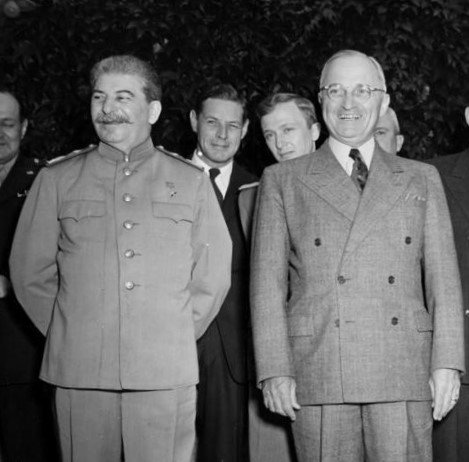Prof. Kathryn Weathersby

As June 1947 progressed, Syngman Rhee and Kim Ku intensified their opposition to trusteeship. They organized strikes of railroad and power station workers and refused to submit questionnaires to the Joint Commission, which ruled out participation in consultations. Fearing large-scale violence, General Hodge responded with nothing more than verbal rebuke of their tactics.
At the same time, the political theater that was the Joint Commission moved toward its inevitable conclusion. On June 25 the Commission convened a preliminary Consultative Body of Korean leaders, which had an unusual composition. From the northern zone, where political activity was firmly controlled by Soviet authorities and local Communists, representatives came only from three parties and thirty-five social organizations. From the more populous South, however, participation reflected the escalating political tumult. More than 400 parties registered with the Commission, and they claimed a combined membership of 62 million people, more than three times the entire population of the southern zone!
The Soviet delegation predictably refused to accept enough of the rightists to guarantee that the remaining Consultative Body would be predominantly leftist. General Shtykov insisted that the eight parties belonging to the “Anti-Trusteeship Committee” be excluded, on the grounds that they were responsible for the violent attack on the Soviet delegation. The US State Department, in turn, believed it essential that the American delegation resist this Soviet demand, to ensure that a Moscow-backed leftist government would not be established in Seoul.
American officials had good reason to believe that the Soviets would create a satellite state in Korea like the ones they were creating in Eastern Europe. After the US delegation’s visit to Pyongyang in early July, General Hodge’s new political adviser, Joseph E. Jacobs, who had recently served in Albania, reported that a regime similar to the puppet states he had seen in Eastern Europe was in control in the northern zone. In addition, he noted that the Soviets had already created strong police and military forces in their zone. Consequently, even if the Joint Commission could somehow create a representative provisional government, the Communists would be able to exploit the political divisions in the South in order to seize control in Seoul.
Since the end of the Cold War, several scholars have mined newly opened archives in former communist countries to investigate how Soviet control was established in the areas the Red Army occupied at the end of World War II. They have revealed that the pattern differed somewhat in each place, as Soviet authorities adapted their policies and tactics to local conditions. In every case, however, Moscow’s goal was consistent. Stalin was determined to protect the Soviet Union against future attack by establishing buffer states around its periphery that were thoroughly subservient to Soviet wishes.
For postwar Korea, this tragic reality meant that there were two possible outcomes – a unified state under Soviet control or a divided country with one half controlled by Moscow and the other half left to work out a different fate. Once the Americans recognized this situation after their trip to Pyongyang in early July, they firmly rejected the Soviet position on consultation. General Hodge declared that Shtykov’s demand that they exclude members of the Anti-Trusteeship Committee was simply a ruse designed to prevent all rightist participation in the provisional government. Hodge insisted instead on complete freedom of speech for all groups, even if that led to the adjournment of the Joint Commission. To substantiate this position, he lifted the ban on public demonstrations against trusteeship.
In the next post we will examine the impact of the July 19 assassination of Yeo Un-hyung and the gradual formation of plans in Washington for a separate state in southern Korea.
[Sources: This post relies on work on Soviet postwar occupations by historians such as Norman Naimark, Jordan Baev, Laszlo Borhi, Mark Kramer, Vladislav Zubok, as well as my own work on the Soviet occupation of North Korea. It also relies on James I. Matray, The Reluctant Crusade: American Foreign Policy in Korea, 1941-1950 (University of Hawaii Press, 1985)]
a very incredible work sir,i have to learn a lot from you sir,@wisdomandjustice
Downvoting a post can decrease pending rewards and make it less visible. Common reasons:
Submit